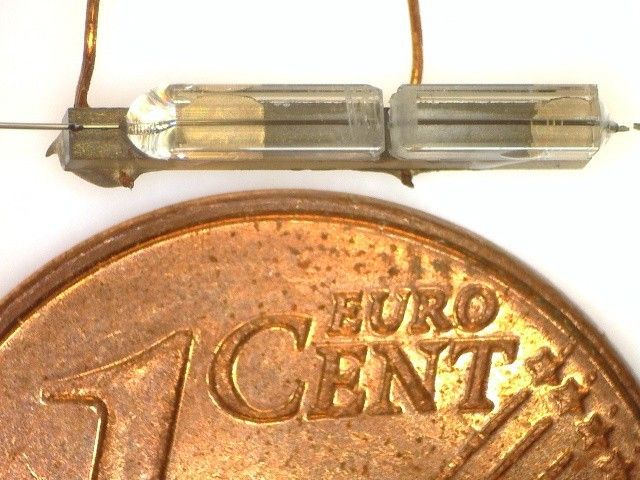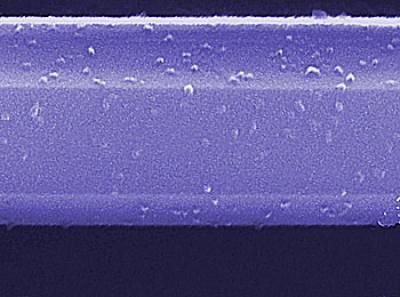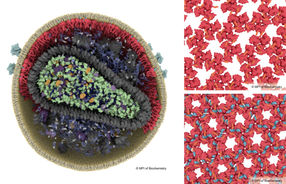Innovations through hair-thin optical fibres
Study shows what miniaturised optical filters make possible
Scientists at the University of Bonn have built hair-thin optical fibre filters in a very simple way. They are not only extremely compact and stable, but also colour-tunable. This means they can be used in quantum technology and as sensors for temperature or for detecting atmospheric gases. The results have been published in the journal “Optics Express”.

The miniaturised optical filter is located in the central slot of the sleeve mount.
© Uni Bonn
Optical fibers not much thicker than a human hair today not only constitute the backbone of our world-wide information exchange. They are also the basis for building extremely compact and robust sensors with very high sensitivity for temperature, chemical analysis and much more.
Optical resonators or filters are important components cutting out very narrow spectral lines from white light sources. In the simplest case such filters are built from two opposing mirrors tossing light back and forth as precisely as the pendulum of a clock work. The color of the filtered light is set by the mirror separation.
Suitable mirrors with high quality have been integrated with the end of such hairlike fibers for some time. Researchers of the University of Bonn have succeeded to build in a simple way such hairlike optical fiber resonators. They are not only extremely compact and stable but also allow to tune their color: they have glued the fiber ends carrying the mirrors into a common ferrule which can be stretched by means of a piezo crystal and hence control the mirror separation.
"The miniaturised optical filter makes a further contribution to making photonics and quantum technologies the decisive technology of the 21st century," says Prof. Dr. Dieter Meschede from the Institute of Applied Physics at University of Bonn. The scientist is a member of "Matter and light for quantum computing" (ML4Q) Cluster of Excellence of the Universities of Bonn and Cologne and RWTH Aachen University and is also a member of the Transdisciplinary Research Area “Building Blocks of Matter and Fundamental Interactions” at the University of Bonn.
Miniaturized highly stable optical precision filters are promising multiple applications: they can store light energy within such a small volume such that already single photons can be efficiently stored and manipulated. Their high sensitivity suggests to build extremely compact and selective sensors, e.g. for detecting atmospheric gases. Using even more stable materials for the ferrule tiny optical clock works with extremely high frequency stability may be built.
Original publication

Get the analytics and lab tech industry in your inbox
By submitting this form you agree that LUMITOS AG will send you the newsletter(s) selected above by email. Your data will not be passed on to third parties. Your data will be stored and processed in accordance with our data protection regulations. LUMITOS may contact you by email for the purpose of advertising or market and opinion surveys. You can revoke your consent at any time without giving reasons to LUMITOS AG, Ernst-Augustin-Str. 2, 12489 Berlin, Germany or by e-mail at revoke@lumitos.com with effect for the future. In addition, each email contains a link to unsubscribe from the corresponding newsletter.


























































